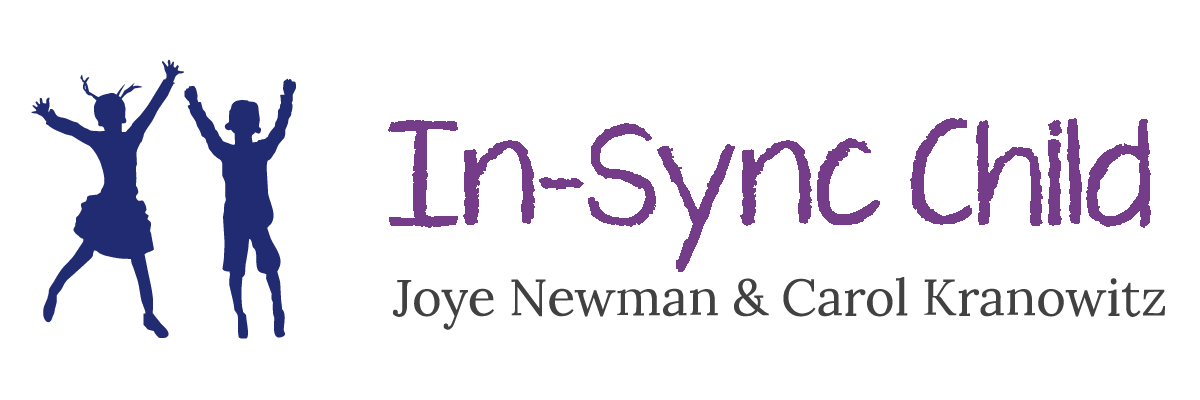Articles
(2020) In-Sync Activities to Help Kids Cope with Being Cooped Up
A chapter in Autism-in-Lockdown: Expert Tips and Insights on Coping with the COVID-10 Pandemic (Future Horizons).
Being cooped up because of COVID-19 is especially hard for kids with autism and their grown-ups. An antidote for cabin fever may be these five In-Sync, sensory-motor activities to get kids touching and moving, seeing and hearing in engaging ways.
(2020) Keeping Your Vision In Sync
A chapter in Autism-in-Lockdown: Expert Tips and Insights on Coping with the COVID-10 Pandemic (Future Horizons).
A scary thing about the COVID-19 quarantine is the potential damage we do to our — and our children’s — visual systems by spending so much time indoors and on screens. The chapter includes a brief of discussion of visual skills as well as five "In-Sync" activities for kids at home to develop and enhance vision.
(2012) Growing In-Sync Children
October/November issue of Teaching Young Children, Vol. 6, No. 1, a magazine for the preschool professional published by National Association for the Education of Young Children.
Between birth and about age 6, children learn about their world by feeling and moving their bodies through it. The more children move, the more they will feel comfortable in their bodies and in sync with the world.
(2012) Three Children Get "In-Sync”
Published in the October 2012, Vol. 33, Number 11, issue of The Educational Therapist.
Reprinted from Joye and Carol's book, Growing an In-Sync Child (Perigee, 2010), this article looks at preschooler George, 1st-grader Rosie, and 6th-grader Bernie, who benefited from early intervention that focused on developing and enhancing their developmental skills.
(2012) The In-Sync Homeschooler
Published in the July blog of Home-Educating Family.
No matter what their ages, children learn best when they move. Pediatricians, teachers and other specialists now recognize that motor skills are vital to a child’s physical, emotional, academic, and overall success. Yet some educators and parents believe that sitting still is the best way to absorb information. We know that just the opposite is true.
(2012) Moving Experiences that Will Last a Lifetime
Interview with Joye Newman Expert on Childhood Motor Development, In-Sync Child, Activity Cards
By Lorna d'Entremont
"Today’s guest for our Author Interview Series is Joye Newman, an expert in early childhood motor development. Parents, teachers, and other caregivers working with young children will benefit from her parenting books and activity cards... "
Joye: "Birth through age 6 is a time for exploration and learning. Children should not be taught specific skills, as their systems are still building the FOUNDATION upon which all subsequent skills will rest. In our Kids Moving Company classes, we provide environments that encourage children to explore and develop at their own rate and time. Children need to feel successful so that they want to 'keep trying.'..."

The Washington Post: New AAP statement calls recess ‘crucial’ to the child’s development
By Mari-Jane Williams
"We all feel so much better after we have moved purposefully and vigorously,” said Carol Kranowitz of Bethesda, who co-authored “Growing an In-Sync Child” with Joye Newman. “Children will have a better appetite for lunch, be more alert throughout the school day and be infinitely more cheerful if they have frequent recesses. People who are comfortable in their bodies find almost everything easier," Newman said. "The way a child becomes comfortable in his body is by moving. If you put a 3-year-old down in a classroom and have him practice reading and writing until he’s 5, as opposed to another child running around playing and rolling down hills, by second grade, the second one will be much farther along in reading and writing."

